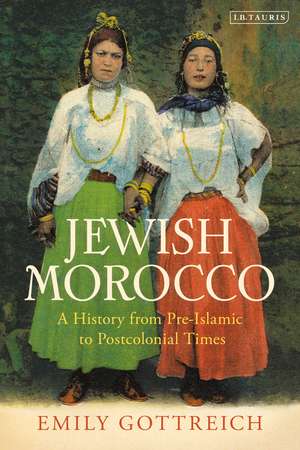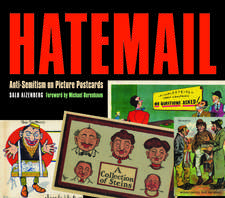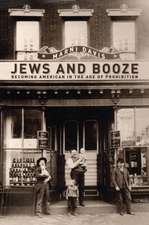Jewish Morocco: A History from Pre-Islamic to Postcolonial Times
Autor Emily Benichou Gottreichen Limba Engleză Paperback – 25 aug 2021
| Toate formatele și edițiile | Preț | Express |
|---|---|---|
| Paperback (1) | 218.18 lei 6-8 săpt. | |
| Bloomsbury Publishing – 25 aug 2021 | 218.18 lei 6-8 săpt. | |
| Hardback (1) | 598.84 lei 6-8 săpt. | |
| Bloomsbury Publishing – 19 feb 2020 | 598.84 lei 6-8 săpt. |
Preț: 218.18 lei
Preț vechi: 275.15 lei
-21% Nou
Puncte Express: 327
Preț estimativ în valută:
41.75€ • 43.50$ • 34.57£
41.75€ • 43.50$ • 34.57£
Carte tipărită la comandă
Livrare economică 03-17 aprilie
Preluare comenzi: 021 569.72.76
Specificații
ISBN-13: 9780755644360
ISBN-10: 0755644360
Pagini: 264
Ilustrații: 10 integrated bw
Dimensiuni: 156 x 234 mm
Greutate: 0.37 kg
Editura: Bloomsbury Publishing
Colecția I.B.Tauris
Locul publicării:London, United Kingdom
ISBN-10: 0755644360
Pagini: 264
Ilustrații: 10 integrated bw
Dimensiuni: 156 x 234 mm
Greutate: 0.37 kg
Editura: Bloomsbury Publishing
Colecția I.B.Tauris
Locul publicării:London, United Kingdom
Notă biografică
Emily Benichou Gottreich is an Adjunct Professor in Global Studies at the University of California, Berkeley, U.S. She is also former President of the American Institute for Maghrib Studies (AIMS). She holds a PhD from Harvard University, U.S.
Cuprins
IntroductionChapter One: MalikismLaw and Religion. Malikism as law of the land today, Jews in pre-Islamic Morocco, Islamic conquests, conversion, Jews under Islamic rule, adoption of Malikism and the development of legal plurality, Maimonides in Fez. Chapter Two: The Berber QuestionEthnicity. Amazigh rights movement in context of Arab spring, Rise of Berber dynasties (Almoravids, Almohads, Marinids), development of Berber Islam and Berber Judaism, language issues in Morocco, Goulmima carnival, Amazigh cultural movement, Berber Philo-Semitism and Pro-Israel stance todayChapter Three: Sharifism Power and Authority.Rise of the Moroccan State, Sa'dis and 'Alawis, Sharifism, Mystical movments (Sufism, zawiyas, and Sabbateanism), arrival and integration of the Sephardim, trade, diplomacy.Chapter Four: ColonialismCulture. Jews and the colonial project, mission civilisatrice, the Alliance Israélite Universelle, protégé system, migration and urbanization, the last mellahs, cultural dislocationChapter Five: IndependencePolitics.Anti-colonial movement, communists, the istiqlal party, wifaq, independence, zionism, emigration, Chapter Six: Moroccan Jews and Moroccan Judaism in the Post-Modern EraTime and Space. Jews in the era of Hassan II and Mohammed VI, les années du plomb, Avraham Sarfaty and Sion Assidon, pilgrimage, Peace Movement, Moroccan Jews abroad, Israeli Black Panthers, returnees, representations in novels and films, nostalgiaConclusion
Recenzii
Offers a dynamic, accessible and thought-stimulating book that will be a useful teaching tool while giving more seasoned historians an opportunity to consider the changes in Moroccan historiography . Jewish Morocco appears as a therapeutic history and an ongoing reconciliation that is also taking place in Morocco, with ongoing efforts to restore synagogues and celebrate this Moroccan heritage.
How do you picture the history of Morocco through its Jewish lens? How do you sum up the complexities and contradictions of centuries of Jewish-Muslim encounters and relations and dynasties? Emily Gottreich's book has not only taken on these challenging questions but has delivered on their promise.
This book is an intriguing foray into major themes in Moroccan history and invites readers toreconsider any simple understanding of the relationship between Muslim majorities andreligious minorities in the region. It has much to offer to undergraduate students, scholars of the region, and general readers interested in North Africanand Jewish history.
How do you picture the history of Morocco through its Jewish lens? How do you sum up the complexities and contradictions of centuries of Jewish-Muslim encounters and relations and dynasties? Emily Gottreich's book has not only taken on these challenging questions but has delivered on their promise.
This book is an intriguing foray into major themes in Moroccan history and invites readers toreconsider any simple understanding of the relationship between Muslim majorities andreligious minorities in the region. It has much to offer to undergraduate students, scholars of the region, and general readers interested in North Africanand Jewish history.












